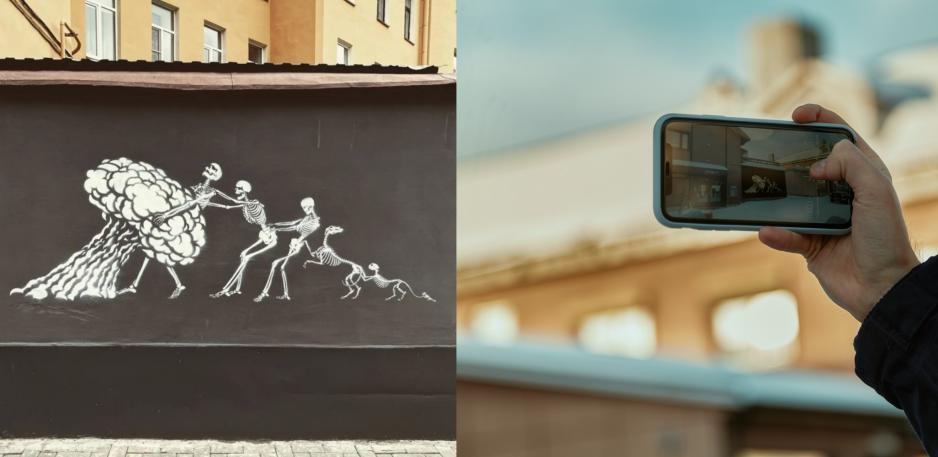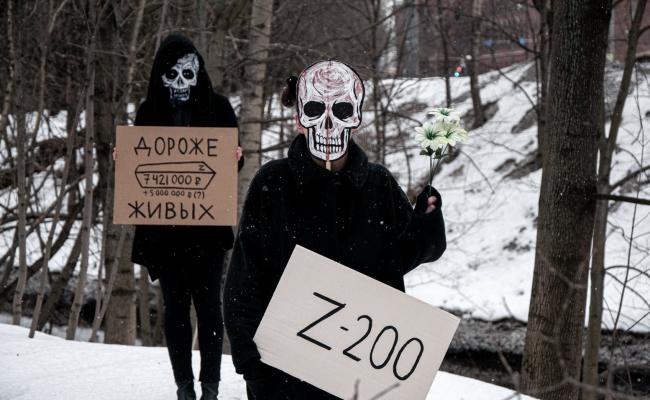
Photo gallery 1: This work in Jekaterinburg shows the logo of the Russian state-owned TV channel Rossija-1 (Russia 1) with the new text: Пиздеж 1 – "Bullshit 1". (Photo: @xbfmthx/@yav_zone; the Norwegian Barents Secretariat)

The audience have a go at Yav's app AR Hunter. (Photo: Alexey Tsalko/Pikene på Broen)

The work Молодость это сейчас – "Youth is now" was created in Moscow in 2021 with the message that youthfulness comes from mindset, not age. After the outbreak of the Ukraine War, the artist changed the text to Война это сейчас – "War is now". (Photo: @philippenzo/@yav_zone) >

The previous work displayed on a wall in Kirkenes. (Photo: Pikene på Broen) >

Joker Kirkenes' advertising posters display new messages... (Photo: Alexey Tsalko/Pikene på Broen)

... with two works from St. Petersburg: Left: Влади, Влади – ович (Vladi, Vladi – ovitsj) is a play on the name of Russia's President Владимир Владимирович Путин – Vladimir Vladimirovitsj Putin. In this work, the word мир (mir), which means peace, has been removed and the name loses its meaning. Right: Идёт is a Russian word for 'go' or something 'happening'. This work can be interpreted as snow falling down (снег идёт), but one can also read the Russian word for war, война, inside of the snowflakes. The message then reads: война идёт – war is happening. (Photo: @misha_marker/@yav_zone) >

The tour of the street art exhibition takes place under the auspices of Evgeny Goman, Producer for Pikene på Broen (far left). (Photo: Alexey Tsalko/Pikene på Broen)













